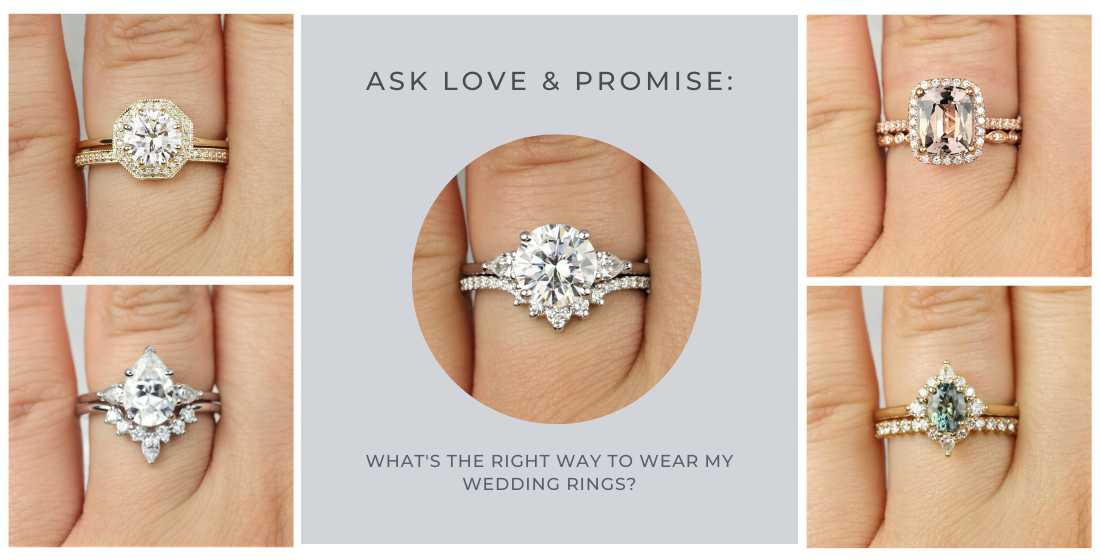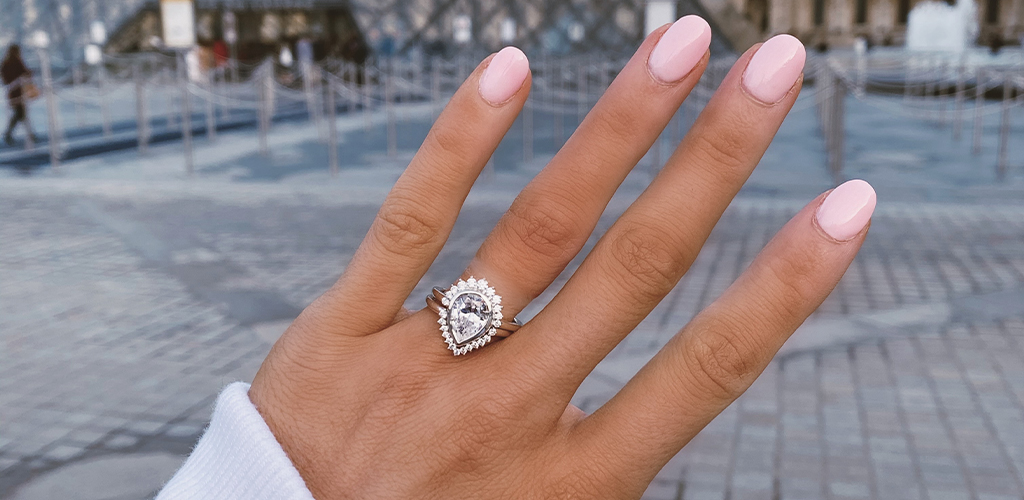Can I wear my wedding ring in the pool? This is a question that many people ask, especially during the summer months. While it may seem like a simple question, the answer is not always straightforward. The safety and longevity of your ring, along with potential health risks, all come into play.
The decision to wear a ring while swimming depends on a variety of factors, including the material of your ring, its design, and your personal preferences. Let’s explore the considerations that can help you make an informed choice.
Wedding Ring Material and Water Resistance

Your wedding ring is a symbol of your commitment and love, and you want to keep it looking its best for years to come. But what about swimming? Can you wear your wedding ring in the pool or ocean? The answer depends on the material of your ring.
Material Properties and Water Resistance
Different materials have different levels of resistance to water damage. Some materials are more susceptible to corrosion, tarnishing, or other damage from chlorine or saltwater. Here’s a breakdown of common wedding ring materials and their water resistance:
- Gold: Gold is a very durable metal and is generally considered safe for swimming. However, it can be scratched or dented by sharp objects in the pool or ocean. Gold alloys, such as white gold or rose gold, may contain other metals that are more susceptible to corrosion.
- Platinum: Platinum is even more durable than gold and is highly resistant to corrosion.
It is an excellent choice for a wedding ring that you plan to wear while swimming.
- Silver: Silver is a softer metal than gold or platinum and is more susceptible to tarnishing. Chlorine and saltwater can accelerate the tarnishing process, so it is best to avoid wearing a silver ring while swimming.
- Titanium: Titanium is a very strong and lightweight metal that is also highly resistant to corrosion.
It is a popular choice for wedding rings because it is hypoallergenic and can withstand the rigors of everyday wear, including swimming.
- Tungsten Carbide: Tungsten carbide is an extremely hard and durable metal that is also resistant to scratches and dents. However, it is not as resistant to corrosion as titanium or platinum. While it is generally considered safe for swimming, it is best to avoid prolonged exposure to chlorine or saltwater.
Effects of Chlorine and Saltwater on Wedding Rings
Chlorine and saltwater can have a significant impact on the appearance and durability of your wedding ring. Chlorine can cause discoloration, tarnishing, and even corrosion in some metals. Saltwater can also cause corrosion, as well as pitting and etching.
- Gold: Gold is relatively resistant to chlorine and saltwater, but it can still be affected over time. Chlorine can cause the gold to become dull and tarnished, while saltwater can cause pitting and etching.
- Platinum: Platinum is highly resistant to chlorine and saltwater, and it is unlikely to be affected by these substances.
- Silver: Silver is very susceptible to tarnishing from chlorine and saltwater.
These substances can cause the silver to turn black or brown, and they can also cause pitting and etching.
- Titanium: Titanium is highly resistant to corrosion, including corrosion from chlorine and saltwater. It is a good choice for a wedding ring that you plan to wear while swimming.
- Tungsten Carbide: Tungsten carbide is relatively resistant to corrosion, but it can be affected by chlorine and saltwater over time.
These substances can cause the tungsten carbide to become dull and scratched.
Recommendations for Swimming with a Wedding Ring
If you plan to swim with your wedding ring, it is important to choose a material that is resistant to water damage. Here are some general recommendations:
- Safe for Swimming: Platinum, titanium, and gold are generally considered safe for swimming.
- Avoid Swimming: Silver and tungsten carbide are not recommended for swimming, as they are more susceptible to damage from chlorine and saltwater.
Ring Design and Security
While the allure of a sparkling wedding band is undeniable, the realities of poolside fun demand a pragmatic approach to ring security. The aquatic environment poses unique challenges, and a misplaced or damaged ring can be a source of distress. Understanding the interplay between ring design and its inherent security in the water is paramount.
Ring Design and Security Features
The security of a ring in water hinges on its design and the materials used. The way a ring is constructed, particularly its setting and clasps, plays a crucial role in preventing accidental loss or damage.
- Prongs: Prong settings, common in diamond rings, secure the gemstone by holding it in place with multiple prongs. While elegant, they can be vulnerable. Strong water currents or a forceful impact can dislodge the gemstone, leading to loss.
- Bezel Settings: Bezel settings encase the gemstone in a metal frame, offering a higher level of security. The frame acts as a protective barrier, minimizing the risk of the stone falling out. However, the bezel itself can be susceptible to damage from impact.
- Channel Settings: Channel settings hold gemstones in a row, secured by metal walls on both sides. This design provides greater security than prongs, making it a good choice for rings worn in water. However, it’s crucial to ensure the channel is well-constructed and free of gaps.
- Clasps: Rings with clasps, often found in eternity bands or rings with multiple stones, offer an extra layer of security. Clasps allow for a secure fit and prevent the ring from easily slipping off. However, clasps can wear down over time, and it’s essential to inspect them regularly.
Ring Fit and Security
The fit of a ring is a crucial factor in its security, particularly in water. A ring that is too loose can easily slip off, especially during swimming or water sports. Conversely, a ring that is too tight can restrict blood flow and cause discomfort.
- Loose-fitting Rings: A loose-fitting ring is a significant risk factor for accidental loss in water. The ring can easily slip off the finger during swimming or water sports, especially with the increased movement of the hand and fingers in the water. Even a seemingly small gap between the ring and the finger can be enough for the ring to slip off, especially with the buoyancy of water.
- Tightly-fitting Rings: A tightly-fitting ring, while seemingly secure, can pose a risk in water. The pressure from the water can cause the ring to become trapped on the finger, potentially restricting blood flow. This can lead to discomfort, swelling, and even a medical emergency. In some cases, the ring may even become embedded in the skin, requiring medical intervention to remove it.
Skin and Health Considerations

While the allure of a sparkling pool might be tempting, wearing your wedding ring while swimming can pose potential health risks to your skin. Prolonged exposure to water, particularly chlorinated pool water, can create an environment conducive to skin irritation, infections, and even allergic reactions.
Skin Irritation and Infections, Can i wear my wedding ring in the pool
The constant moisture trapped between your skin and the ring can create a breeding ground for bacteria and fungi. This can lead to skin irritation, rashes, and even infections like folliculitis (inflammation of hair follicles) or eczema.
Chlorine, while effective in sanitizing the pool, can be harsh on skin, especially when combined with the trapped moisture under the ring.
Furthermore, the friction between the ring and your skin can cause abrasions, making the area more susceptible to infections.
Alternatives to Wearing a Ring: Can I Wear My Wedding Ring In The Pool
While a wedding ring is a cherished symbol of commitment, it might not be the most practical option for swimming. Fortunately, there are various alternatives that allow you to represent your marital status while enjoying a dip in the pool or ocean.
Representing Marital Status While Swimming
Wearing a ring while swimming can pose challenges, from potential damage to the ring itself to discomfort and even safety concerns. Fortunately, alternative ways to represent your marital status exist. These options allow you to maintain a sense of connection to your spouse while enjoying aquatic activities:
- Bracelets: A simple and elegant option, bracelets can be customized with engravings or charms representing your marriage. They offer a subtle way to express your commitment without the constraints of a ring. For instance, a bracelet engraved with your wedding date or your spouse’s initials could serve as a meaningful reminder.
- Necklaces: Necklaces, particularly pendants, can be a beautiful and personal way to represent your marital status. A pendant featuring your spouse’s birthstone or a symbol of your love could be a unique and meaningful way to express your commitment.
- Tattoos: For a more permanent option, a small tattoo of a wedding ring or a symbol representing your marriage can be a unique and discreet way to represent your marital status.
Waterproof Ring Bands
Waterproof ring bands, often made from silicone or other durable materials, are designed to be worn while swimming or engaging in other water-based activities.
- Benefits: They offer a practical solution for those who wish to keep their wedding ring on at all times, providing protection against damage and loss. They are also typically comfortable to wear and come in a variety of styles and colors.
- Drawbacks: While they offer a level of protection, they may not be as aesthetically pleasing as traditional wedding rings. They can also be less durable than traditional rings, requiring replacement over time.
Etiquette of Wearing a Ring While Swimming
The etiquette surrounding wearing a ring while swimming can vary depending on the social context. In general, it is considered acceptable to wear a waterproof ring band or a non-traditional ring designed for water activities.
- Pool Parties: In casual settings like pool parties, wearing a waterproof ring band is often acceptable, especially if it is clearly not a traditional wedding ring.
- Formal Events: In more formal settings, such as weddings or black-tie events, it is generally considered inappropriate to wear a non-traditional ring, even if it is waterproof.
Personal Preferences and Considerations

Deciding whether to wear your wedding ring while swimming is a deeply personal choice, influenced by a complex interplay of factors beyond the practicalities of water resistance and ring design. It’s about understanding your own comfort level, assessing potential emotional implications, and ultimately, making a decision that aligns with your values and priorities.
Emotional Impact of Wearing or Not Wearing a Ring
The emotional significance of a wedding ring goes beyond its physical presence. It symbolizes commitment, love, and a shared journey with your partner. For some, wearing their ring while swimming can be a powerful affirmation of their bond, a tangible reminder of their commitment even when they’re away from their loved one. This can be especially important for individuals who find comfort and security in the visible presence of their ring.
Conversely, others may feel uncomfortable wearing their ring while swimming, associating it with the risk of losing a cherished symbol or feeling restricted in their movements. The fear of losing the ring can be a significant emotional burden, especially for those who have sentimental attachments to their jewelry. In these instances, not wearing the ring might provide a sense of freedom and peace of mind, allowing them to fully enjoy their swimming experience without the added worry.
Pros and Cons of Wearing a Wedding Ring While Swimming
The decision to wear a wedding ring while swimming involves weighing the pros and cons carefully. Consider the following table to guide your choice:| Feature | Pros | Cons ||—|—|—|| Safety |
- Provides a sense of security and peace of mind.
- May discourage unwanted attention or advances.
|
- Risk of losing the ring in the water.
- Can be a safety hazard if caught on something.
|| Style |
- Complements your swimwear and personal style.
- A visual reminder of your commitment.
|
- May be uncomfortable or restrict movement.
- Can be damaged by chlorine or salt water.
|| Personal Preference |
- Offers a sense of comfort and familiarity.
- A personal expression of your values and beliefs.
|
- May cause anxiety or discomfort.
- Can feel restrictive or inconvenient.
|Ultimately, the decision to wear or not wear a wedding ring while swimming is a deeply personal one. It’s essential to prioritize your own comfort, safety, and emotional well-being.
Ultimately, the decision of whether or not to wear your wedding ring while swimming is a personal one. Consider the factors we’ve discussed, including ring material, design, potential health risks, and your own comfort level. By weighing these elements, you can make a choice that best suits your needs and allows you to enjoy your time in the water without compromising your ring or your health.
Question & Answer Hub
What are the best materials for a wedding ring that can withstand water exposure?
Titanium, platinum, and some types of gold are generally considered safe for swimming due to their water resistance.
Can I wear my ring if it has gemstones?
While some gemstones can withstand water, it’s best to consult with a jeweler to determine if your specific ring is safe for swimming.
What if my ring is loose?
A loose ring can be a safety hazard while swimming, as it could easily slip off. It’s best to avoid wearing a loose ring in the water.